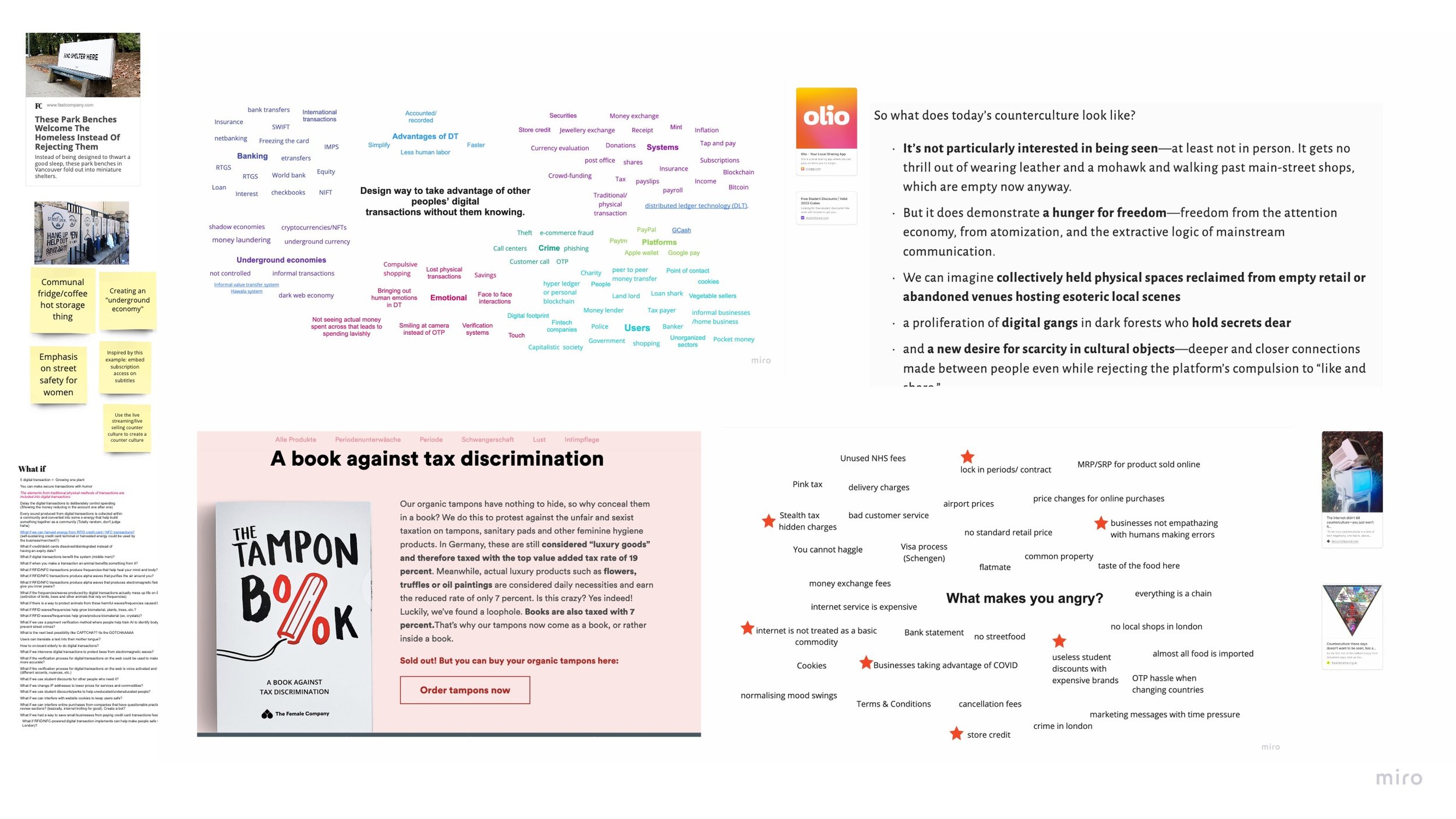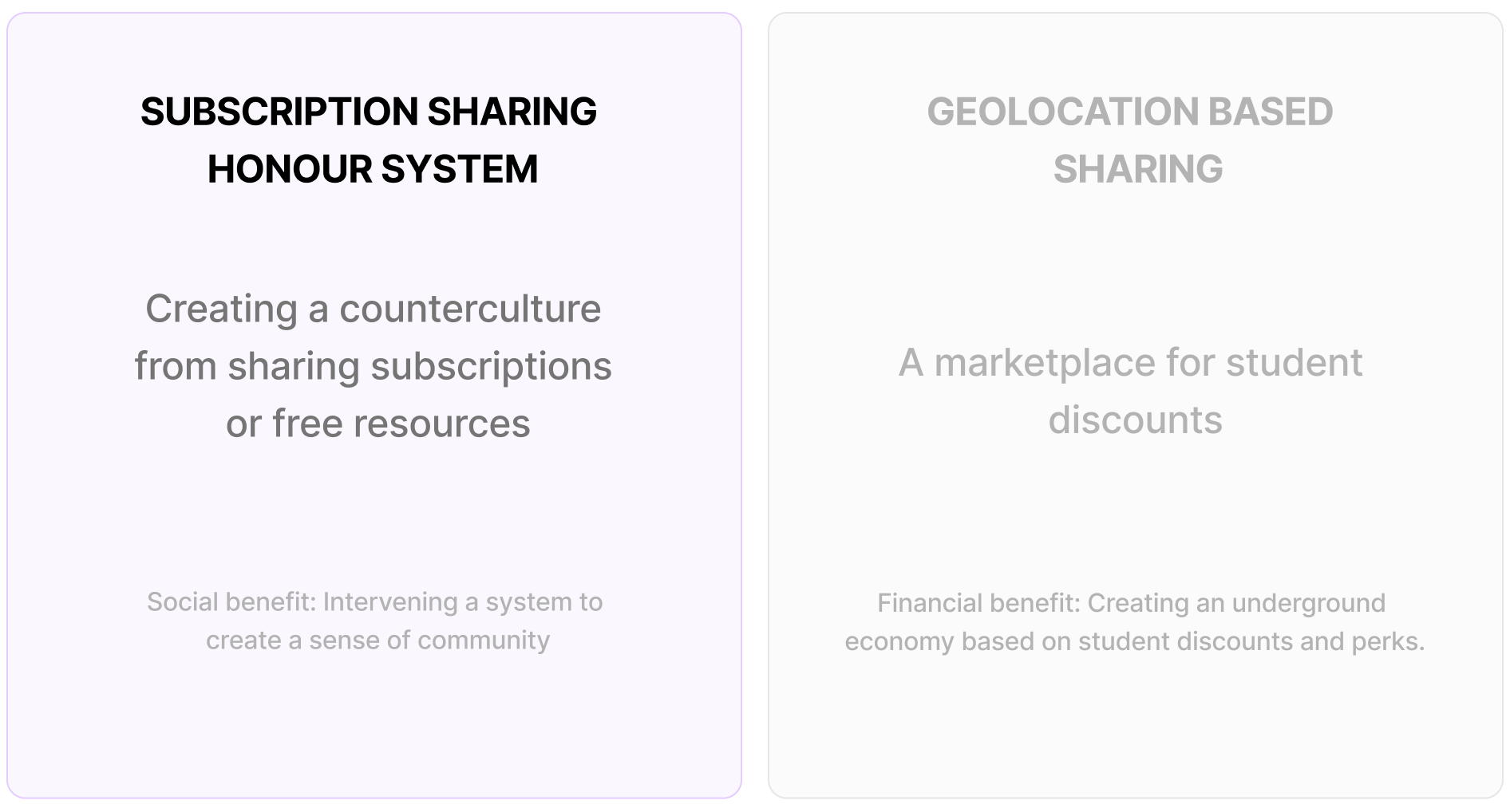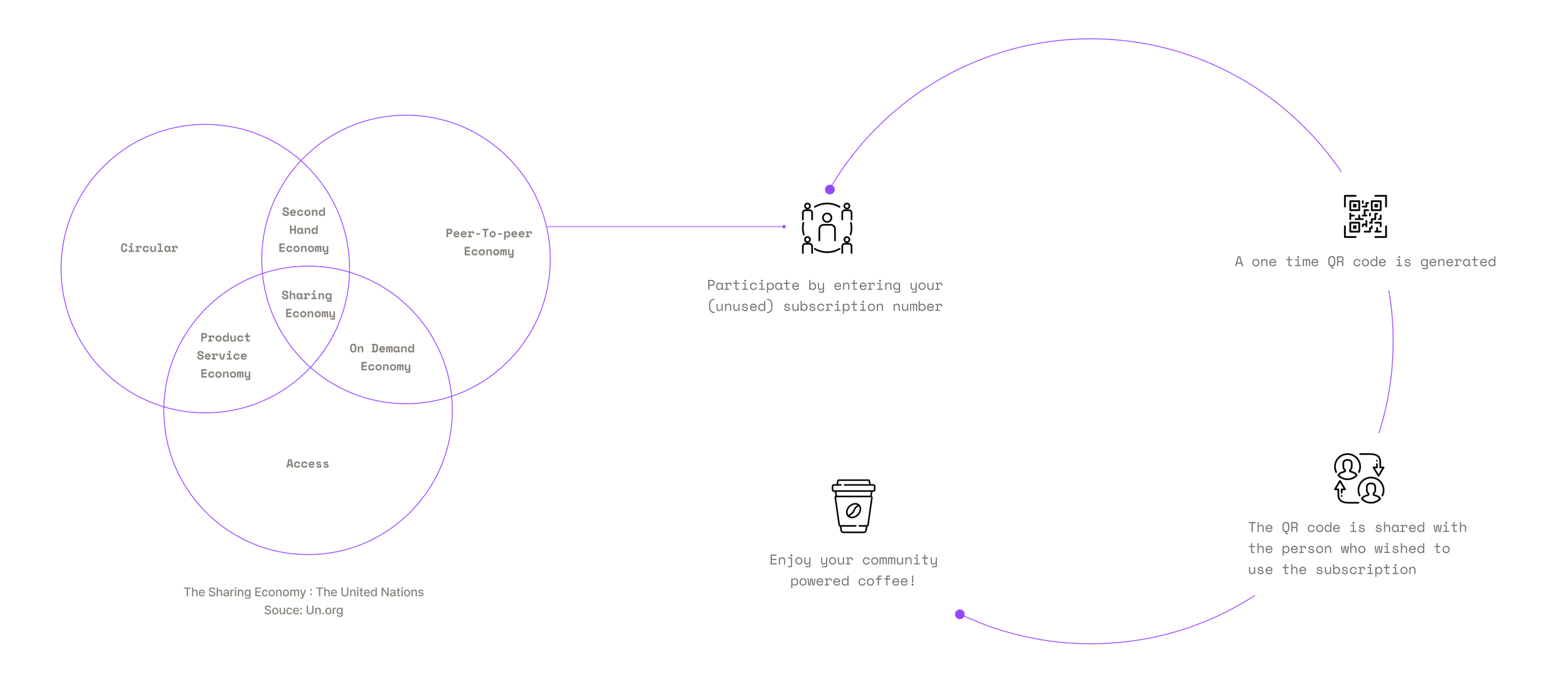Redefining Resource Ownership:
Designing to Resist Tech Hegemony And Encourage Sharing In Local Communities
PARTNERS
IBM x UAL
RESEARCH METHODS
Abstraction laddering
Business origami
TOOLS
Figma
Miro
OUTCOME
A Design framework for a system that encourages sharing digital resources, with a focus on trust and social justice in a participatory setting.
In a nutshell
How might we design for trust and social justice in a participatory setting?
The brief from IBM was “to design a way to take advantage of other people's digital transactions without them knowing”. Still, obvious ethics concerning dark patterns and users being exploited for their data led to subverting the brief.
With the focus on designing a system that encourages sharing digital resources e.g. unused subscriptions.
The Challenge
Abstract Laddering
Abstract laddering was employed to redefine the problem and challenge our preconceptions. It provided us with a direction for exploration and encouraged us to consider trust and social justice as primary objectives.
Ethnographic Research
Our secondary research focused on identifying existing laws and systems to intervene effectively without violating legal boundaries.
Inspired by projects like "The Tampon Book," which successfully combated discriminatory taxation, we sought experimental solutions within the existing legal framework.
-
A Day in the Life is an ethnographic research method used to elicit the different interaction points of the user and the solution in the context of their life. We explored the interactions and dynamics surrounding credit card usage. We examined the card's physicality, ergonomics, social standing, advantages, disadvantages, and relevance in the context of users' lives.
Business Origami
Using Business Origami, we delved deep into the identified laws and services, mapping the system's key players and touchpoints. This approach facilitated a comprehensive understanding of various attributes, including service providers, businesses, individuals, and users. We divided the group further to work on multiple outcomes. This helped us cover more ground in less time.

Fig. 3: Mapping existing services and user journeys

Fig. 4: The outcome of the Business origami workshop
Speculating The Service
By referencing the UN's sharing economy diagram, our group developed a service model focusing on subscription-sharing through an honour system. This allowed us to extract certain benefits from retail subscription and discount programs.
Piloting The Service
We selected an educational building near a coffee shop to test our service. We designed posters to explain the service and the honour system and provided QR codes to purchase coffee. Our deliberate choice to create an underground culture led us to design an analog rather than a digital system.
-
At the outset, we noticed a sense of scepticism among the students regarding the new service. However, word-of-mouth began to spread as they started using it and experiencing its benefits. This organic promotion played a vital role in building trust and encouraging more students to participate.
Remarkably, the students showed great respect for the honour system underlying the service. Some even contributed to the subscription database and actively supported its growth. This demonstrated their understanding of the collaborative nature of the system.
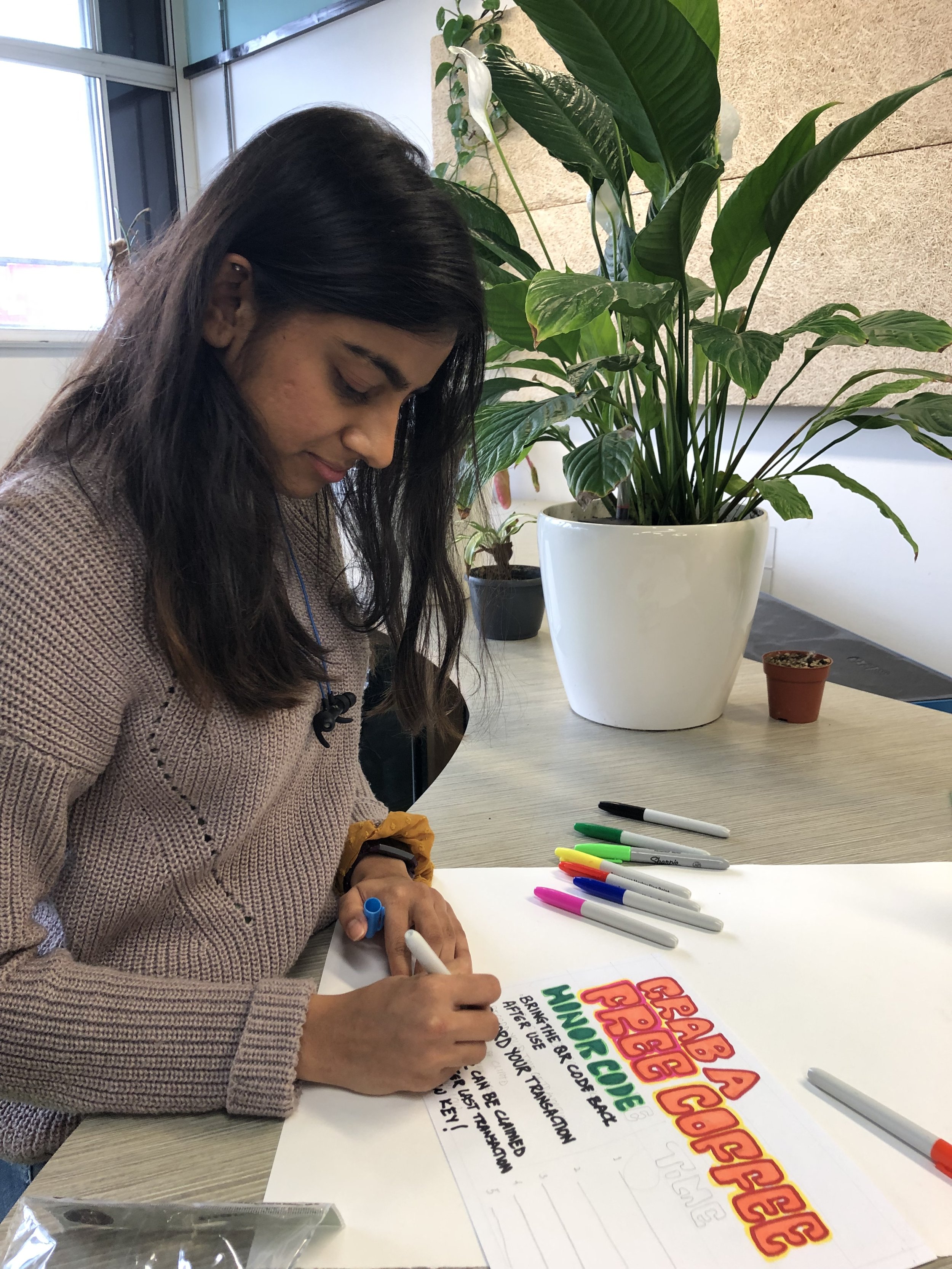
Fig. 7: Making posters for the service

Fig. 8: Printed resource QR codes

Fig. 9: Posters across campus

Fig. 11: Participant with their free coffee
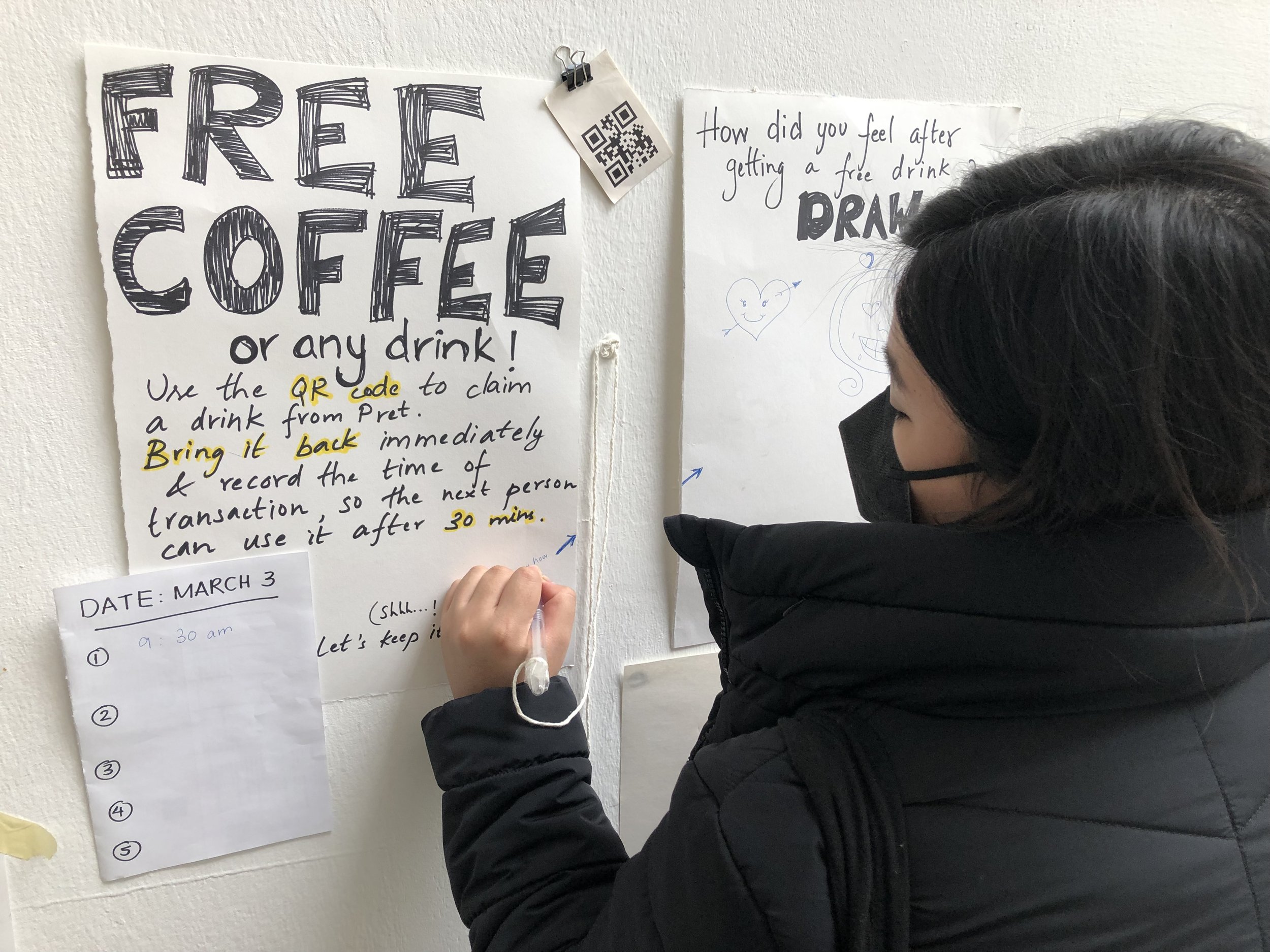
Fig. 10: Student testing our service
Outcome
We based our system at The Graffiti Tunnel on Leake Street, in London, observing its real-time functionality. This decision aimed to explore the juxtaposition between digital transactions and physical outcomes.
Reflections
Who Is To Blame?
Ethics was a recurring theme during the project. More relevant than ever, the challenge presented by IBM, involving the dilemma of leveraging digital transactions without users' awareness, highlighted the responsibility of both designers in preventing exploitative dark patterns and users ensuring and demanding transparency from companies that extract data. This aspect resonated deeply with me, reinforcing the importance of ethics and transparency in design and its potential impact on people's experiences.
Where Does Your Design Live?
To test the real-world application of the service, particularly the decision to keep it analog and locate it at The Graffiti Tunnel, Helped us think beyond surface-level interactions and User-friendly interfaces and emphasised the broader implications of design decisions. It highlighted the interplay between digital and physical experiences and how designs are used beyond their intended purposes.
Ultimately, this project emphasised the multifaceted nature of design and the need for holistic thinking, ethical considerations, and a deep understanding of the socio-technical landscape. It also underscored the power of collaboration, innovative interventions, and the potential to challenge existing systems for the betterment of society.

